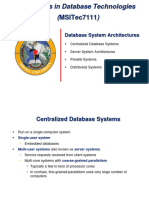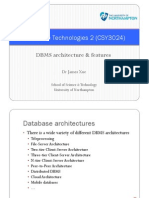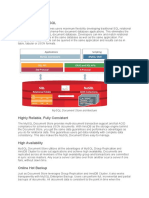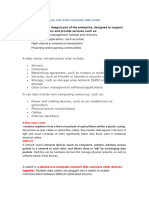0% found this document useful (0 votes)
139 views34 pagesAnatomy of A Proxy Server
This document provides an overview of MaxScale, a database proxy server. It discusses what a database proxy is and how MaxScale works. MaxScale acts as an intermediary between clients and databases, receiving requests and directing them to the appropriate database server. It uses an event-based architecture and non-blocking I/O to improve performance. MaxScale implements various modules like routers, monitors, and filters to route requests and integrate features like high availability.
Uploaded by
nagendra pratapCopyright
© © All Rights Reserved
We take content rights seriously. If you suspect this is your content, claim it here.
Available Formats
Download as PDF, TXT or read online on Scribd
0% found this document useful (0 votes)
139 views34 pagesAnatomy of A Proxy Server
This document provides an overview of MaxScale, a database proxy server. It discusses what a database proxy is and how MaxScale works. MaxScale acts as an intermediary between clients and databases, receiving requests and directing them to the appropriate database server. It uses an event-based architecture and non-blocking I/O to improve performance. MaxScale implements various modules like routers, monitors, and filters to route requests and integrate features like high availability.
Uploaded by
nagendra pratapCopyright
© © All Rights Reserved
We take content rights seriously. If you suspect this is your content, claim it here.
Available Formats
Download as PDF, TXT or read online on Scribd
/ 34
























































































